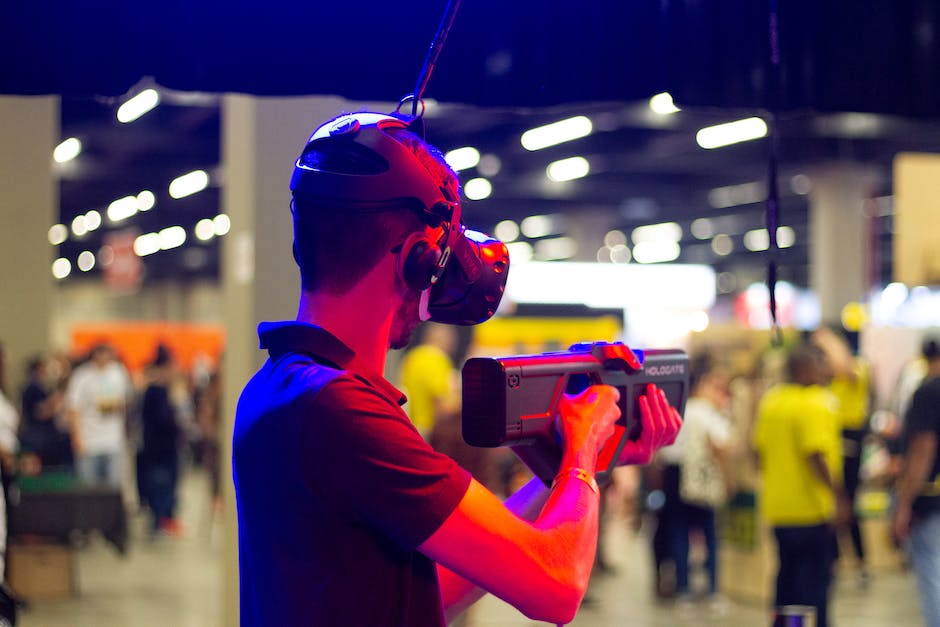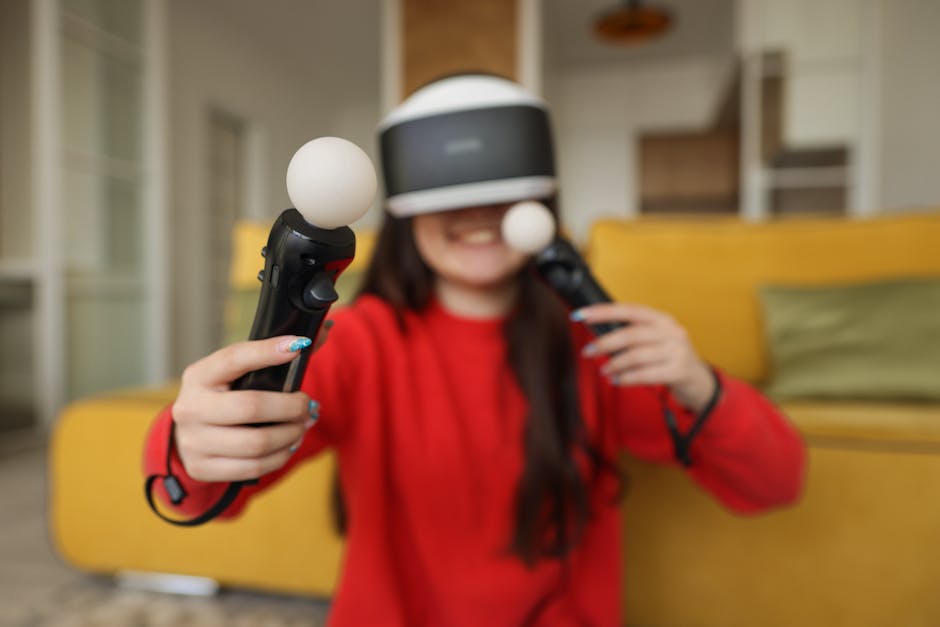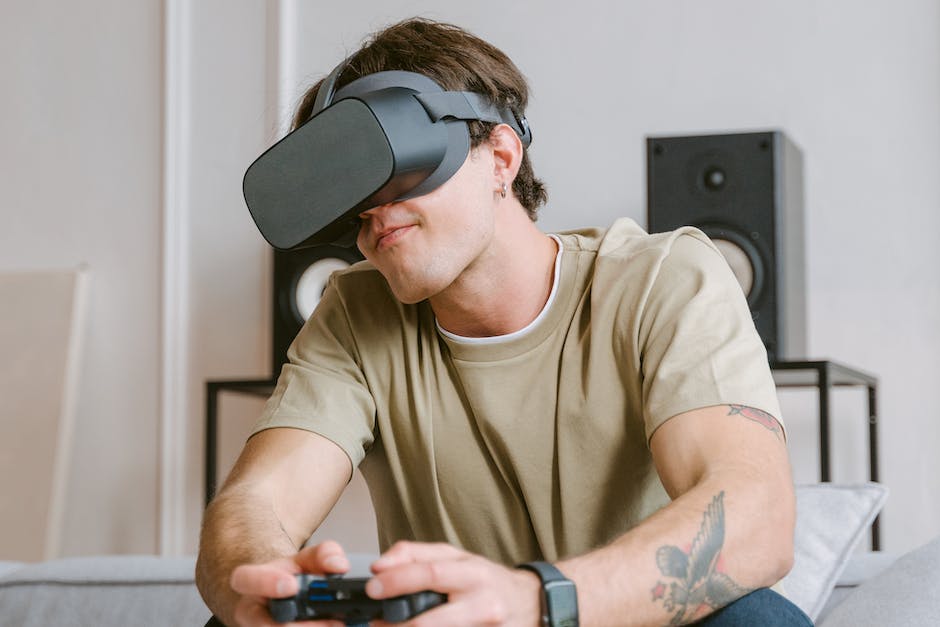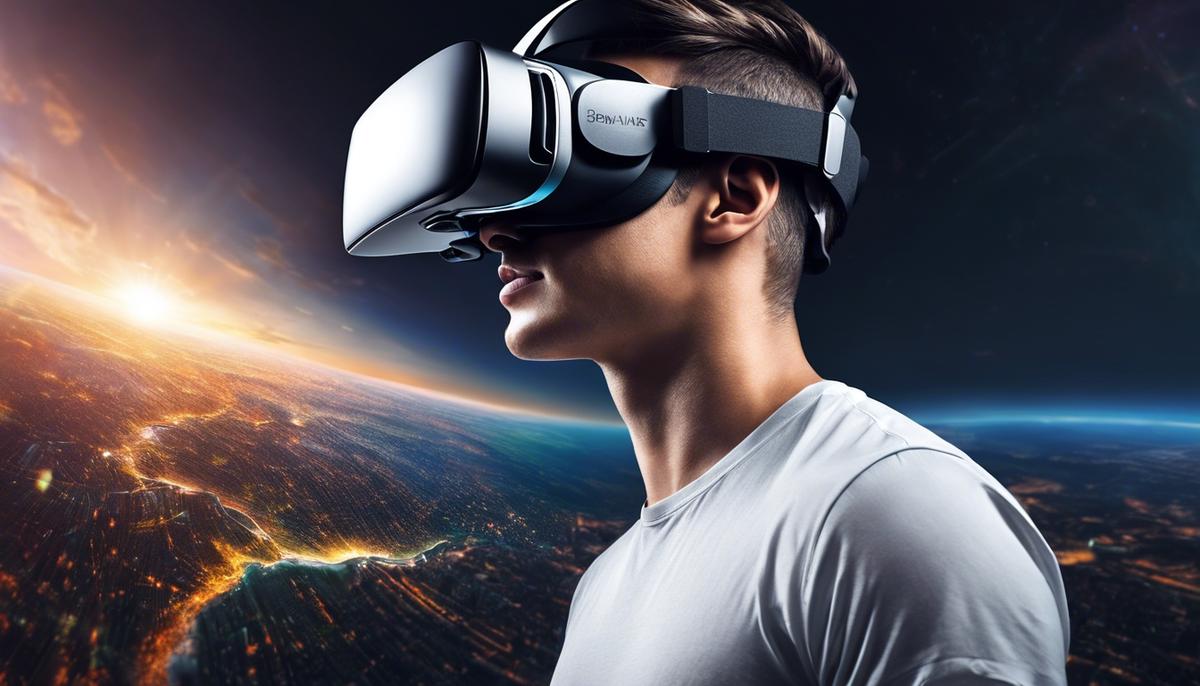Just as the magic lantern opened a door in the 1800s for the fantastical world of cinema. Today we find ourselves standing at the precipice of another profound technological revolution. Virtual Reality, or VR, is the technology designed to simulate an environment that can be similar to or completely different from the real world. Virtual Reality is rising to be the new frontier of human-tech interaction. As an immersive technology, VR has already courted several industries, and gaming is at the forefront, leading the charge. Deploying state-of-the-art hardware and innovative software solutions, the gaming industry is redefining embedding players in the gaming universe. In this context, our journey will navigate us collectively through the heart and soul of the Virtual Reality Gaming universe, starting from its enigmatic operation to its ground-breaking applications in gaming.
Understanding Virtual Reality
Unraveling Virtual Reality: A Groundbreaking Technological Feat
If the term ‘Virtual Reality’ (VR) conjures images of sci-fi movies and futuristic fantasies. It’s time to dive deeper into the real, palpable domain of this awe-inspiring technology. VR is no longer a hovering mirage on a digital horizon, but an established tool with significant potential for re-shaping our world.

Virtual Reality, in broad strokes, is a computer-generated simulation of a three-dimensional environment. Using specialized hardware and software, VR transports users from reality into immersive, interactive experiences that produce a high level of presence and engagement.
Historically, a VR system has three primary components: the computer, the software, and the user interface. The computer must possess ample processing power to run the simulations, while the software drives the creation of realistic environments. The user interface, often in the form of head-mounted displays (HMDs), gloves, or body suits, provides an intuitive means of interaction for the user, transforming digital feedback into sensory experiences.
HMDs are the commonly recognized face of VR devices. Featuring dual screens (one for each eye), they strive to achieve stereoscopic effects and, paired with headphone technology, allow for full immersion. Some modern devices also track head and eye movements, enabling the software to adjust the view according to each individual user’s motion and focus.
The fundamental principle behind VR’s immersive effect
The fundamental principle behind VR’s immersive effect is the concept of ‘presence’. By tricking the human brain into perceiving the simulated environment as real, users feel physically present within the virtual world, thus actively engaging with its elements. This is achieved through a complex melding of photorealistic visuals, spatialized 3D audio, haptic feedback, and real-time interactive responses.
Take haptic feedback as an example. Haptic technology recreates the sense of touch by applying forces, vibrations, or motions to the user. This tactile information, paired with hand controllers or gloves, enables the user to ‘feel’ virtual objects or encounter real-life touch sensations within the virtual world.
VR technology employs a method called ‘six degrees of freedom’ (6DoF) to facilitate comprehensive interaction. This system allows users to move naturally within the environment, tracking their movements forwards or backward, up or down, and to the left or right, whilst also recognizing rolling, pitching, and yawing motions.
By blending powerful hardware, sophisticated software, and intuitive wearable technology. Virtual Reality provides a fully immersive, sensory-rich experience that pushes the reasoning boundaries. Its potential goes beyond the gaming industry, with promising prospects in education, healthcare, military training, architecture, and beyond. As VR continues to evolve, it’s racing towards changing not just how we envision our digital lives, but also how we interact with the real world. VR isn’t the future. It’s here. Embrace it.
Innovation in VR Gaming
In the realm of VR gaming, tech companies are continually setting new standards and pushing the envelope of what is possible. An essential area of innovation is the development of wireless tech capability. A primary limitation of VR is the tethering that hinders the player’s free movement, but advancements in wireless technology have reduced this issue significantly. Companies like Oculus and HTC are revolutionizing the space with their wireless headsets, Oculus Quest 2, and Vive Focus Plus, creating smoother, unrestrictive gaming experiences.

Another fascinating development is eye-tracking technology. Tech companies like Facebook, with their VR subsidiary Oculus, are working to incorporate eye-tracking into their systems, opening the avenue for a more realistic VR experience. The ability of the VR system to understand the user’s line of sight and adapt accordingly enhances immersion levels drastically. It also helps render VR scenes with greater efficiency, providing higher-resolution visuals only where the user’s gaze focuses.
Simultaneously, Machine learning (ML) and AI play a crucial role in enhancing the VR gaming experience. They allow the creation of algorithmically generated virtual worlds and adapt the gaming environment based on user behavior and preferences. OpenAI, a crucial player in the AI space, uses machine learning algorithms to mimic real-world physics in games, improving the immersion and overall gameplay experience.
With the rise of Mixed Reality (MR) platforms like Microsoft’s HoloLens, the boundaries between the real world and the virtual world are becoming increasingly blurred. MR combines elements of AR and VR to create an experience where real and virtual objects co-exist and interact in real time. In a more game-focused application, VR devices like HP’s Omnicept Solution are incorporating heart rate sensors, paving the way for ‘bio-interactive’ games that respond to the player’s physical state, possibly creating more tense or relaxed situations based on the player’s heart rate.
Furthermore, the partnership between cloud gaming and VR is the next logical step in maximizing accessibility. Tech companies like Google and Nvidia are working on incorporating VR into their cloud gaming platforms, potentially freeing players from hardware limitations and ensuring high-quality VR gaming for a broader audience.
All these innovations showcase the remarkable strides that tech companies are making in the VR gaming realm. It is a field that continues to hold massive potential, with innovations driving home the reality that the future of gaming will be in virtual reality.
Detailed Game Reviews
Now that we’ve got an understanding of the fundamentals and the exciting direction in which virtual reality (VR) gaming is headed. It’s time to dive into the cream of the crop – the top VR games currently leading the pack.
Beginning with the thrilling world of VR swordplay we step into “Blade and Sorcery”. Widely touted as the best VR sword-fighting game available now, this game delivers unparalleled physicality in combat due to its advanced physics engine. Replete with an array of weapons, spells, and an immersive environment, its realistic interactions and movement truly elevate the player’s sense of presence.

Next up is “Asgard’s Wrath”, exclusively for the Oculus Rift platform. Set in the mythical world of Norse gods, it showcases one of the most abundant and fleshed-out VR role-playing game (RPG) settings today. Offering over 30 hours of engaging gameplay, it thrives in narrative depth, a beautifully created world as well as intricate combat mechanics. It’s a testament to the capabilities of VR for more extensive, full-blown RPGs.
“Half-Life: Alyx”, valve’s flagship VR title, fully exploits the medium’s potential in storytelling. Famous for its intense narrative experience and ground-breaking physics, it raised the bar for VR gaming. Its two-handed mechanic believe-ably simulates handling objects, while its tiptoe-inducing spatial audio places players right in City 17, setting an industry standard for future VR games.
Let’s not disregard the power a straightforward yet satisfying Beat Saber holds. This rhythm game involves slashing beats that fit perfectly into handcrafted music, quickly becoming a must-play for VR enthusiasts. It’s a perfect example of gameplay tailored for VR, demonstrating how the simplest concepts can utterly engross players when the VR environment is expertly exploited.
A nod must be given to the adrenaline-filled “Echo VR”. This zero-gravity sports game uses Oculus Rift’s Touch controllers to their full potential. Teams compete in an arena to throw a disc into the opposing team’s goal, all while maneuvering with no gravity. The game boasts a level of physicality and is a fitting exhibition of what can be achieved in the VR sports genre.
Bringing the list to an end – “The Room VR: A Dark Matter”. This puzzle game brings players into various bizarre locations to uncover a gripping narrative through solving intricate puzzles. Its high-grade graphics coupled with haptic feedback, transport players into their captivating, intricate puzzle world.
In a nutshell, today’s top VR games are not just providing immersive gaming experiences but are setting the mold for future VR games. They’re challenging the limitations of current technology, crafting unique and engaging narratives, and creating game mechanics that fully exploit the VR platform’s capabilities. It will be fascinating to watch how these remarkable games will influence the virtual reality domain’s trajectory in the future.
Challenges and Future Applications
While the rise of VR gaming paints an exciting picture steeped in innovative technology and immersive experiences, it’s prudent to also examine the potential issues that could hinder the widespread adoption and seamless enjoyment of VR gaming. Addressing these concerns diligently could potentially accelerate the realization of a future where VR gaming is as commonplace as a console or PC gaming.
One of the most prevalent issues is the “motion sickness” associated with VR gaming. This discomfort stems from the disconnect between our visual perception and physical experience, often exacerbated by sub-par latency times and inaccurate positional tracking. Overcoming this requires continual development in VR technology to create smoother, more natural feeling movements within the VR space. Incorporation of dynamic field-of-view modifications, refining global motion compensation technology, and improving headset refresh rates are all promising directions being pursued.

Cybersecurity is another concern brought to the fore with VR gaming. As with any other form of digital interaction, VR gaming presents a potential gateway for malicious actors to exploit vulnerabilities for data theft or other harmful activities. Implementing robust encryption mechanisms for transactions within VR environments, solidifying game code against potential exploits, and administering regular security patches should be considered baseline necessities rather than afterthoughts.
The substantial hardware requirements for a high-quality VR gaming experience are another area that needs to be addressed. The computational power necessary for seamless VR rendering and latency reduction often requires expensive, specialized hardware. Approaches to mitigate this problem include continued improvements in hardware efficiency and computational power, along with a concerted drive toward making VR more affordable without sacrificing quality.
Physical limitations, such as restricted play space, can be another potential issue, as VR gaming often requires more physical movement than traditional gaming. To tackle this, VR developers could utilize technologies such as room-scale tracking and explore the use of redirected walking techniques in games. Furthermore, adapting gameplay to accommodate seated play or confined play spaces is another practical solution worth considering.
The social aspect of gaming, while not a consistent concern, is less prominent in VR gaming due to the physical isolation one might feel while engrossed in a VR environment. Exploring integrated social VR platforms, like Facebook Horizon or VRChat, can help combat this, promoting greater social interaction and fostering a more communal feel to VR gaming.
Despite these challenges, the potential of VR gaming remains vast and exciting. With technological advancement and innovative thinking, VR gaming will continue to evolve, providing a new immersive way to the game. As tech enthusiasts, it’s thrilling to watch and participate in this revolution within the gaming industry and anticipate where this cutting-edge technology takes us next.
Conclusion
As technology marches forward, Virtual Reality continues to expand its reach, blurring the lines between imagination and reality in gaming. Although hurdles exist, be they technical, design-related, or potential health risks, they are mere stepping stones in the continual evolution of VR gaming technology. The limitless potential of this medium is nestled within the minds of current and future game developers and tech enthusiasts. The promise of unseen innovations and exciting applications in both gaming and other areas beckons us to a future where virtual reality might become just as ubiquitous as the smartphones of today. The journey through the world of VR gaming is one filled with excitement, discovery, and the constant drive for innovation. Engaging in this journey enables us to envision the limitless possibilities, compelling us to relentlessly venture further into the amazing world of VR gaming.

Hi, I’m Nathan Cross, a writer and avid reader who loves crafting articles for newspapers and online platforms. Words are my passion, whether I’m telling stories, sharing insights, or sparking conversations. When I’m not writing, you’ll find me lost in a book or out on the baseball field, enjoying the game that keeps me grounded. Writing, reading, and baseball—these are the things that define me.




[…] Virtual reality (VR) is a burgeoning field within the tech and gaming industry with tantalizing potential for esports. Though still in its infancy relative to other technologies described here, VR brings an unprecedented level of immersion and could redefine audience engagement and competitive gaming structures in the future. It provides a tantalizing hint at a future where physical presence in a stadium is no longer necessary to feel the adrenaline rush of being ‘in’ the action. […]